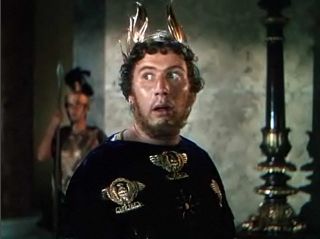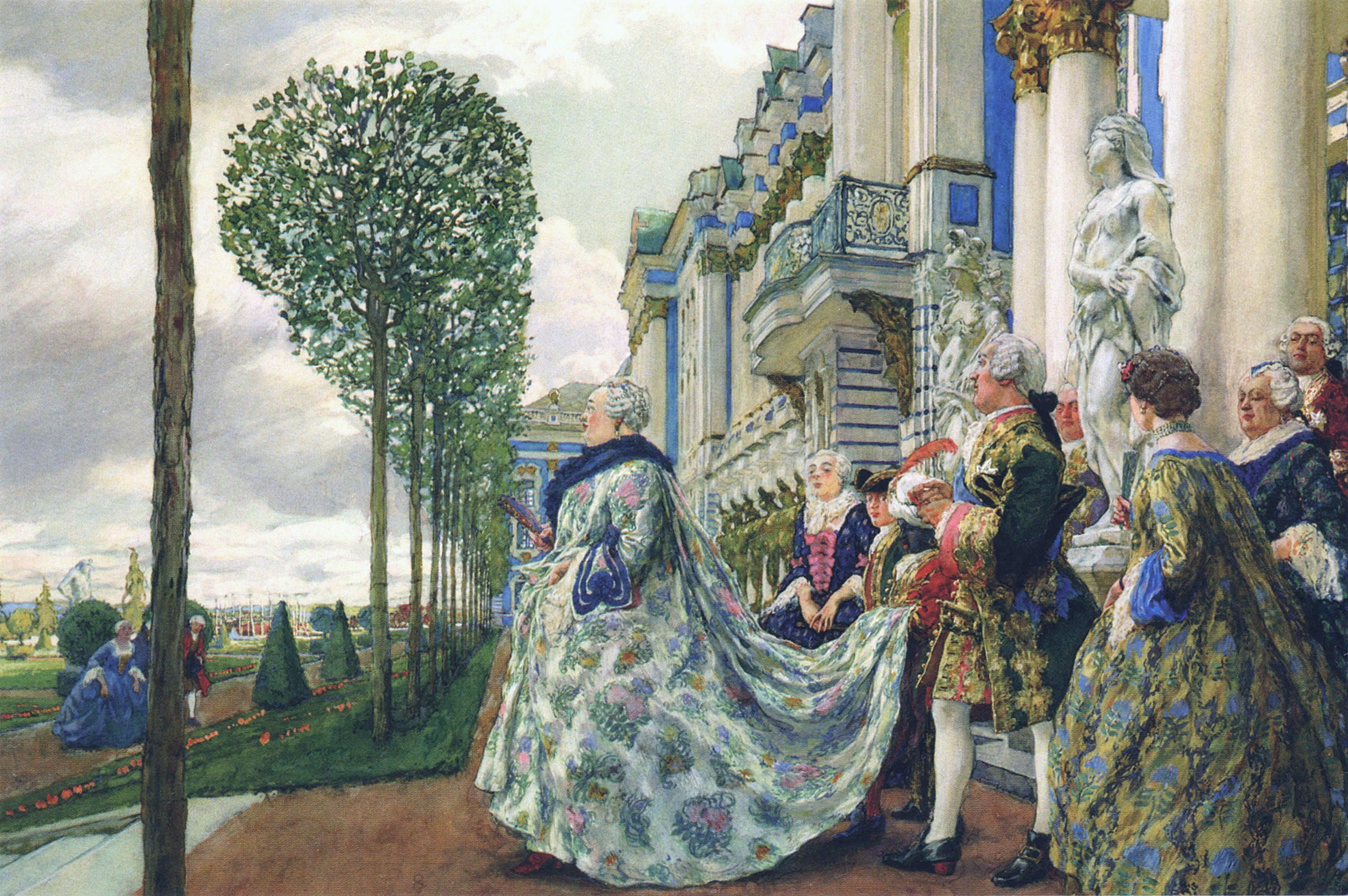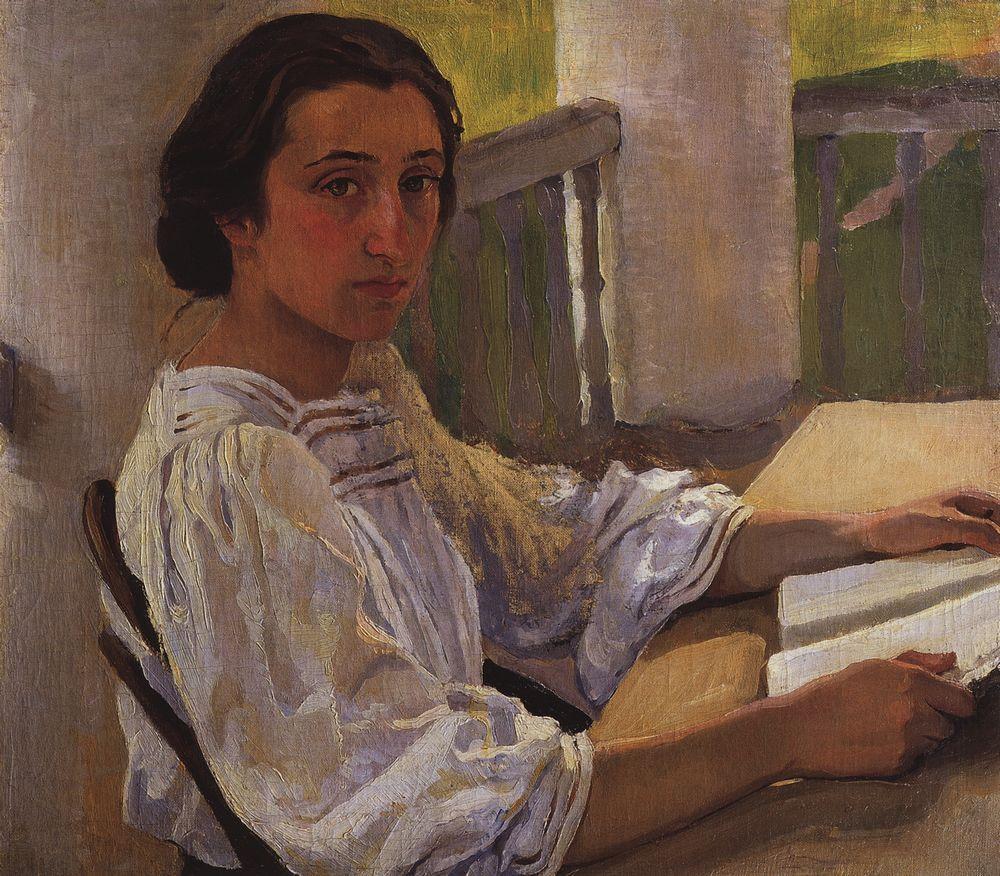|
Nikolai Benois
Nicholas Benois (russian: link=no, Никола́й Лео́нтьевич Бенуа́; 13 July 1813 – 23 December 1898) was an Imperial Russian architect who worked in Peterhof and other suburbs of St Petersburg. Biography Benois was born in Russia, to Anna Katarina (Groppe), who was of German descent, and a French father, Louis Jules Benois (from Brie, Saint-Ouen-sur-Morin). He studied at the Imperial Academy of Arts from 1827 to 1836. Eight years later, he was appointed a court architect to Nicholas I of Russia and oversaw several projects in the town of Peterhof, notably the Principal Imperial Stables (1847–52). He was quite notable in 19th-century Russia for adhering to the Gothic Revival style of architecture and decoration. Benois designed some of the first railway stations in Russia, notably in Strelna, Tsarskoe Selo and New Peterhof, the last being considered his masterpiece. Later in his career he also worked in the Caucasus, where he designed the Summer Palace ... [...More Info...] [...Related Items...] OR: [Wikipedia] [Google] [Baidu] |
Saint Petersburg
Saint Petersburg ( rus, links=no, Санкт-Петербург, a=Ru-Sankt Peterburg Leningrad Petrograd Piter.ogg, r=Sankt-Peterburg, p=ˈsankt pʲɪtʲɪrˈburk), formerly known as Petrograd (1914–1924) and later Leningrad (1924–1991), is the second-largest city in Russia. It is situated on the Neva River, at the head of the Gulf of Finland on the Baltic Sea, with a population of roughly 5.4 million residents. Saint Petersburg is the fourth-most populous city in Europe after Istanbul, Moscow and London, the most populous city on the Baltic Sea, and the world's northernmost city of more than 1 million residents. As Russia's Imperial capital, and a historically strategic port, it is governed as a federal city. The city was founded by Tsar Peter the Great on 27 May 1703 on the site of a captured Swedish fortress, and was named after apostle Saint Peter. In Russia, Saint Petersburg is historically and culturally associated with t ... [...More Info...] [...Related Items...] OR: [Wikipedia] [Google] [Baidu] |
Alexander Benois
Alexandre Nikolayevich Benois (russian: Алекса́ндр Никола́евич Бенуа́, also spelled Alexander Benois; ,Salmina-Haskell, Larissa. ''Russian Paintings and Drawings in the Ashmolean Museum''. pp. 15, 23-24. Published by Ashmolean Museum, 1989 Saint Petersburg9 February 1960, Paris) was a Russian artist, art critic, historian, preservationist and founding member of ''Mir iskusstva'' (World of Art), an art movement and magazine.Owen, Bobbi. ''Costume Design on Broadway: Designers and Their Credits, 1915-1985''. p. 19 Greenwood Press: New York, 1987 As a designer for the Ballets Russes under Sergei Diaghilev, Benois exerted what is considered a seminal influence on the modern ballet and stage design. Early life and education Alexandre was born into the artistic and intellectual Benois family, prominent members of the 19th- and early 20th-century Russian intelligentsia. His mother Camilla (Russian: Камилла Альбертовна Кавос, and th ... [...More Info...] [...Related Items...] OR: [Wikipedia] [Google] [Baidu] |
Benois Family
The Benois family was a family of prominent 19th- and 20th-century Russian artists, musicians and architects, descended from French confectioner Louis Jules (Leonty Nikolaevich) Benois (1770/1772?-1822), cook-confectioner to the Duke of Montmorency, who moved to Russia in 1794 after the French Revolution and became a royal headwaiter. Famous members of the Benois family include: * Mikhail Benois (1799-1861), colonel, tutor at the Corps of Pages. * Leonty Benois (1801-1883), "the first doctor" in St.Petersburg. * Nicholas Leontievich Benois (1813–1898), Russian architect. Designed several buildings for the Imperial Family at Peterhof. **Nicholas' son Albert Nikolayevich Benois (1852–1936), Russian water-colourist. ***Albert's dtr. Camille Evgenia Benois (1878-1959), artist, married Gen. Dimitri Leonidovitch Horvath (1859-1937) who was General Manager of the Chinese Eastern Railway and a direct descendant of Field Marshal Mikhail Kutuzov (1745-1813). ***Albert's son Nikolai Al ... [...More Info...] [...Related Items...] OR: [Wikipedia] [Google] [Baidu] |
People From Sankt-Peterburgsky Uyezd
A person ( : people) is a being that has certain capacities or attributes such as reason, morality, consciousness or self-consciousness, and being a part of a culturally established form of social relations such as kinship, ownership of property, or legal responsibility. The defining features of personhood and, consequently, what makes a person count as a person, differ widely among cultures and contexts. In addition to the question of personhood, of what makes a being count as a person to begin with, there are further questions about personal identity and self: both about what makes any particular person that particular person instead of another, and about what makes a person at one time the same person as they were or will be at another time despite any intervening changes. The plural form "people" is often used to refer to an entire nation or ethnic group (as in "a people"), and this was the original meaning of the word; it subsequently acquired its use as a plural form of per ... [...More Info...] [...Related Items...] OR: [Wikipedia] [Google] [Baidu] |
Architects From Saint Petersburg
An architect is a person who plans, designs and oversees the construction of buildings. To practice architecture means to provide services in connection with the design of buildings and the space within the site surrounding the buildings that have human occupancy or use as their principal purpose. Etymologically, the term architect derives from the Latin ''architectus'', which derives from the Greek (''arkhi-'', chief + ''tekton'', builder), i.e., chief builder. The professional requirements for architects vary from place to place. An architect's decisions affect public safety, and thus the architect must undergo specialized training consisting of advanced education and a ''practicum'' (or internship) for practical experience to earn a license to practice architecture. Practical, technical, and academic requirements for becoming an architect vary by jurisdiction, though the formal study of architecture in academic institutions has played a pivotal role in the development of the ... [...More Info...] [...Related Items...] OR: [Wikipedia] [Google] [Baidu] |
1898 Deaths
Events January–March * January 1 – New York City annexes land from surrounding counties, creating the City of Greater New York as the world's second largest. The city is geographically divided into five boroughs: Manhattan, Brooklyn, Queens, The Bronx and Staten Island. * January 13 – Novelist Émile Zola's open letter to the President of the French Republic on the Dreyfus affair, ''J'Accuse…!'', is published on the front page of the Paris daily newspaper ''L'Aurore'', accusing the government of wrongfully imprisoning Alfred Dreyfus and of antisemitism. * February 12 – The automobile belonging to Henry Lindfield of Brighton rolls out of control down a hill in Purley, London, England, and hits a tree; thus he becomes the world's first fatality from an automobile accident on a public highway. * February 15 – Spanish–American War: The USS Maine (ACR-1), USS ''Maine'' explodes and sinks in Havana Harbor, Cuba, for reasons never fully establish ... [...More Info...] [...Related Items...] OR: [Wikipedia] [Google] [Baidu] |
1813 Births
Events January–March * January 18–January 23 – War of 1812: The Battle of Frenchtown is fought in modern-day Monroe, Michigan between the United States and a British and Native American alliance. * January 24 – The Philharmonic Society (later the Royal Philharmonic Society) is founded in London. * January 28 – Jane Austen's '' Pride and Prejudice'' is published anonymously in London. * January 31 – The Assembly of the Year XIII is inaugurated in Buenos Aires. * February – War of 1812 in North America: General William Henry Harrison sends out an expedition to burn the British vessels at Fort Malden by going across Lake Erie via the Bass Islands in sleighs, but the ice is not hard enough, and the expedition returns. * February 3 – Argentine War of Independence: José de San Martín and his Regiment of Mounted Grenadiers gain a largely symbolic victory against a Spanish royalist army in the Battle of San Lorenzo. * February ... [...More Info...] [...Related Items...] OR: [Wikipedia] [Google] [Baidu] |
Helsinki
Helsinki ( or ; ; sv, Helsingfors, ) is the Capital city, capital, primate city, primate, and List of cities and towns in Finland, most populous city of Finland. Located on the shore of the Gulf of Finland, it is the seat of the region of Uusimaa in southern Finland, and has a population of . The Helsinki urban area, city's urban area has a population of , making it by far the List of urban areas in Finland by population, most populous urban area in Finland as well as the country's most important center for politics, education, finance, culture, and research; while Tampere in the Pirkanmaa region, located to the north from Helsinki, is the second largest urban area in Finland. Helsinki is located north of Tallinn, Estonia, east of Stockholm, Sweden, and west of Saint Petersburg, Russia. It has History of Helsinki, close historical ties with these three cities. Together with the cities of Espoo, Vantaa, and Kauniainen (and surrounding commuter towns, including the eastern ... [...More Info...] [...Related Items...] OR: [Wikipedia] [Google] [Baidu] |
Peter Ustinov
Sir Peter Alexander Ustinov (born Peter Alexander Freiherr von Ustinov ; 16 April 192128 March 2004) was a British actor, filmmaker and writer. An internationally known raconteur, he was a fixture on television talk shows and lecture circuits for much of his career. An intellectual and diplomat, he held various academic posts and served as a goodwill ambassador for UNICEF and president of the World Federalist Movement. Ustinov was the winner of numerous awards during his life, including two Academy Awards for Best Supporting Actor, Emmy Awards, Golden Globes, and BAFTA Awards for acting, and a Grammy Award for best recording for children, as well as the recipient of governmental honours from, amongst others, the United Kingdom, France, and Germany. He also displayed a unique cultural versatility which frequently earned him the accolade of a Renaissance man. Miklós Rózsa, composer of the music for ''Quo Vadis'' and of numerous concert works, dedicated his String Quartet No. 1 ... [...More Info...] [...Related Items...] OR: [Wikipedia] [Google] [Baidu] |
Eugene Lanceray
Yevgeny Yevgenyevich Lanceray (russian: Евгений Евгеньевич Лансере; 23 August 1875 – 13 September 1946), also often spelled Eugene Lansere, was a Russian graphic artist, painter, sculptor, mosaicist, and illustrator, associated stylistically with ''Mir iskusstva'' (Mir iskusstva, the World of Art).Scholl, Tim. "From Petipa to Balanchine: Classical Revival and the Modernization of Ballet", page 144. London: Routledge, 1994. Early life and education Lanceray was born in Pavlovsk, Saint Petersburg, Pavlovsk, Russia, a suburb of Saint Petersburg. He came from a prominent Russian artistic family of French origin.Chilvers, Ian. "A Dictionary of Twentieth-Century Art", p. 560. Oxford: Oxford University Press, 1999. His fatherEugeny Alexandrovich Lanceray was a sculptor. His grandfather Nicholas Benois, and his uncle Leon Benois, were celebrated architects. Another uncle, Alexandre Benois, was a respected artist, art critic, historian and preservationist. His ... [...More Info...] [...Related Items...] OR: [Wikipedia] [Google] [Baidu] |
Zinaida Serebriakova
Zinaida Yevgenyevna Serebriakova (russian: Зинаида Евгеньевна Серебрякова; – 20 September 1967) was a Russian and later French painter. Family Zinaida Serebryakova was born on the estate of Neskuchnoye near Kharkov (now Kharkiv, Ukraine) into the artistic Benois family in the Russian Empire. Her father, Evgenii Lansere, was a sculptor and her mother, Ekaterina Lansere, was a painter. Her grandfather, Nicholas Benois, was a prominent architect, chairman of the Society of Architects and member of the Russian Academy of Science. Her uncle, Alexandre Benois, was a painter, founder of the ''Mir iskusstva'' art group. One of Zinaida's brothers, Nikolay Lanceray, was an architect, and her other brother, Yevgeny Yevgenyevich Lanceray, had an important place in Russian and Soviet art as a master of monumental painting and graphic art. The English actor and writer Peter Ustinov was also related to her. Youth In 1900, she graduated from a women's gym ... [...More Info...] [...Related Items...] OR: [Wikipedia] [Google] [Baidu] |
Leon Benois
Leon Benois (russian: Леонтий Николаевич Бенуа; 1856 in Peterhof – 1928 in Leningrad) was a Russian architect from the Benois family. Biography He was the son of architect Nicholas Benois, the brother of artists Alexandre Benois and Albert Benois. He built the Roman Catholic cathedral of Notre-Dame in St Petersburg, the mausoleum of the Grand Dukes of Russia in the Peter and Paul Fortress, the Russian Chapel in Darmstadt, and the Alexander Nevsky Cathedral, Warsaw, among many other works. Benois served as Dean of the Imperial Academy of Arts (1903–06, 1911–17) and edited the architecture magazine ''Zodchii''. He gave his name to Leonardo da Vinci's painting ''Benois Madonna'' which he inherited from his father-in-law and presented to the Hermitage Museum. The painter Nadia Benois was his daughter, and the actor Sir Peter Ustinov was his grandson. See also * Benois family External links Cathedral of Notre-Dame de St Petersburg [...More Info...] [...Related Items...] OR: [Wikipedia] [Google] [Baidu] |



_1938.jpg)





